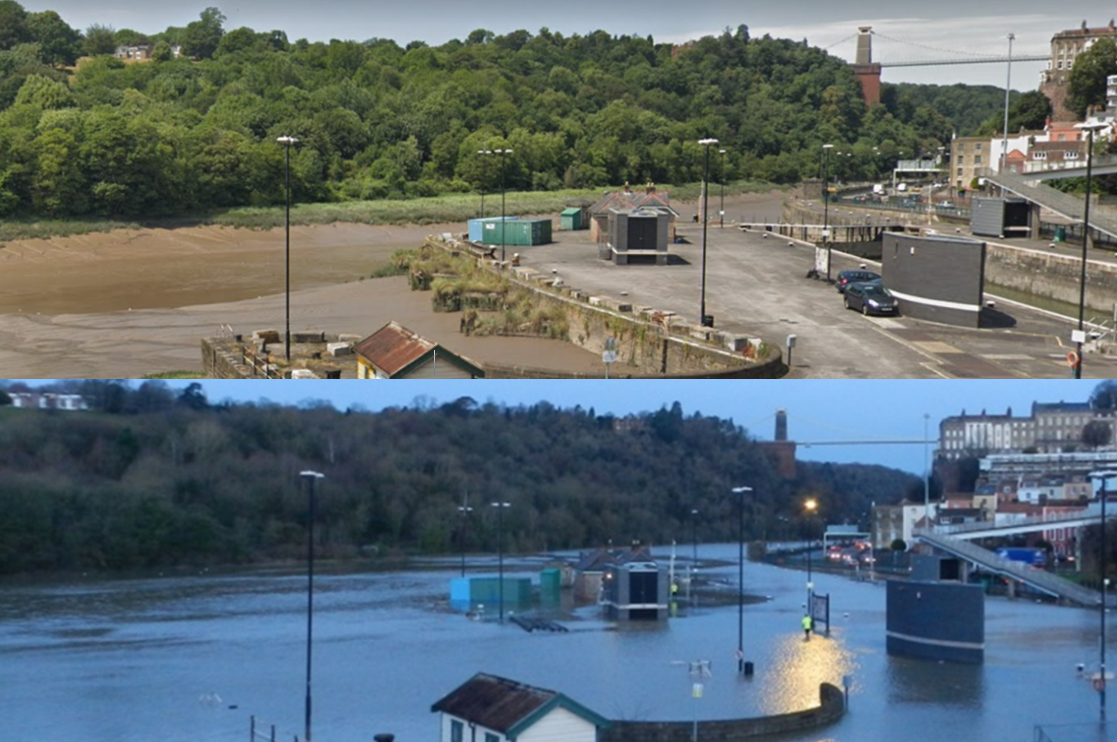30. 05. 2019
STORMS, TIDES AND THE CHALLENGES FACING COASTAL CITIES – SOME THOUGHTS FROM BRISTOL
BY ROB HENDERSON, WESSEX WATER
Many of the world’s long-established towns and cities are coastal and they face some of the greatest challenges of all urban areas. This is largely due to the age of the infrastructure in their core area and also the specific conditions close to the sea, with its dynamic tidal environment and weather conditions. All three of the RESCCUE case study cities are coastal but Bristol is faced with particular problems, as the Bristol Channel is famed for having the second highest tidal range in the world. In addition, the tidal River Avon runs through Bristol, also posing a significant flooding risk to the city.
Central Bristol has a largely combined sewerage system taking both foul flows and surface runoff, and before the 1970s, almost all of Bristol’s wastewater was discharged untreated to the tidal River Avon. This was remedied by construction of a network of tunnels to intercept and convey flows to a new sewage treatment works near the coast at Avonmouth. A key component of this strategic infrastructure is the Ashton Avenue sewage pumping station (SPS) which lifts flow from large sewers below the low-lying and flood-prone area of Ashton Vale – a case-study area for the Bristol RESCCUE team.
High water levels in the river reflect the highest tide level of 8.2mAOD, almost 2m higher than parts of Ashton Vale, which is protected from flooding by high river banks, tide flaps (on surface water and watercourse outfalls) and by the Ashton Avenue SPS, which can also take flow from land drainage via syphon pipes on the adjacent Colliters Brook.
During storms when flows exceed the pass-forward pumping rate of 2.1m3/s the excess is pumped to a high-level fine screening chamber from where flow gravitates to the River Avon. If the stormflow is so high that it exceeds the total pumping capacity (9.6m3/s) then the excess goes to a gravity overflow, fitted with tide flaps. However, this cannot operate under all tidal states, resulting in flooding risk when tide level is greater than ground level. Modelling work has shown that the total pumping capacity is beaten by a storm having a return period of approximately 1 in 5 years. A long record of tidal data was also analysed to confirm critical tidal exceedance levels.
Applying future climate change rainfall and sea level rise predictions it has been possible to quantify the increasing “double jeopardy” risk of flooding caused by increasingly severe storms coinciding with increasingly likely critical tide levels. Compared to the present day, it is possible that by 2050 the risk of property flooding in the area will be some 6 times greater, accelerating to over 20 times greater by the end of the century. This knowledge will focus minds in planning for the future – a very valuable output of the RESCCUE project to inform future protection measures needed.
And this is before we consider other potential impacts on coastal wastewater systems caused by a rising sea level, such as increasing saline ingress impacting on treatment processes or causing increased deterioration of concrete and steel infrastructure.

